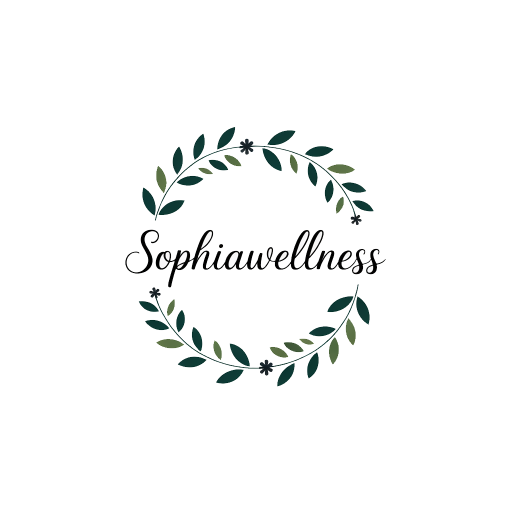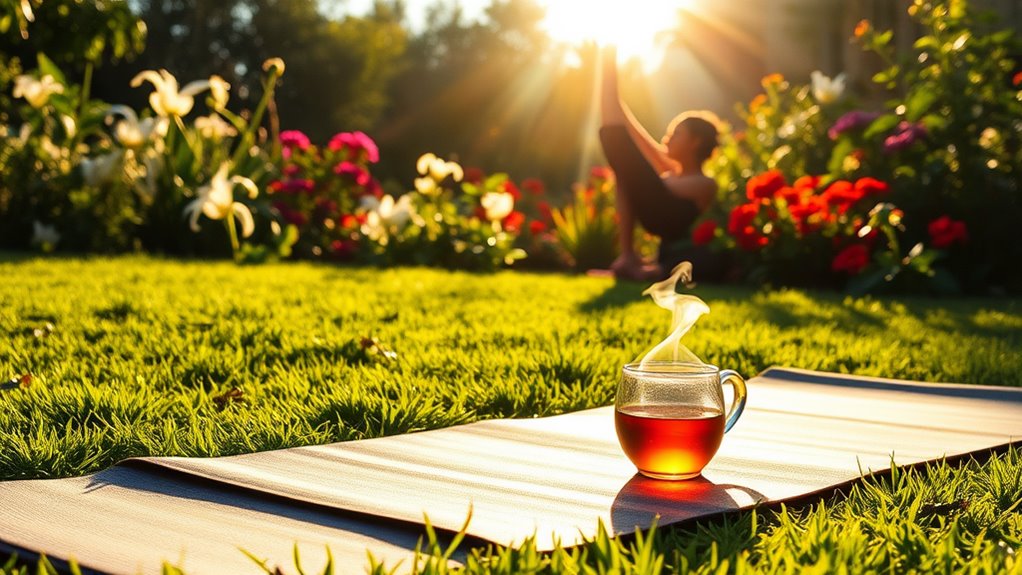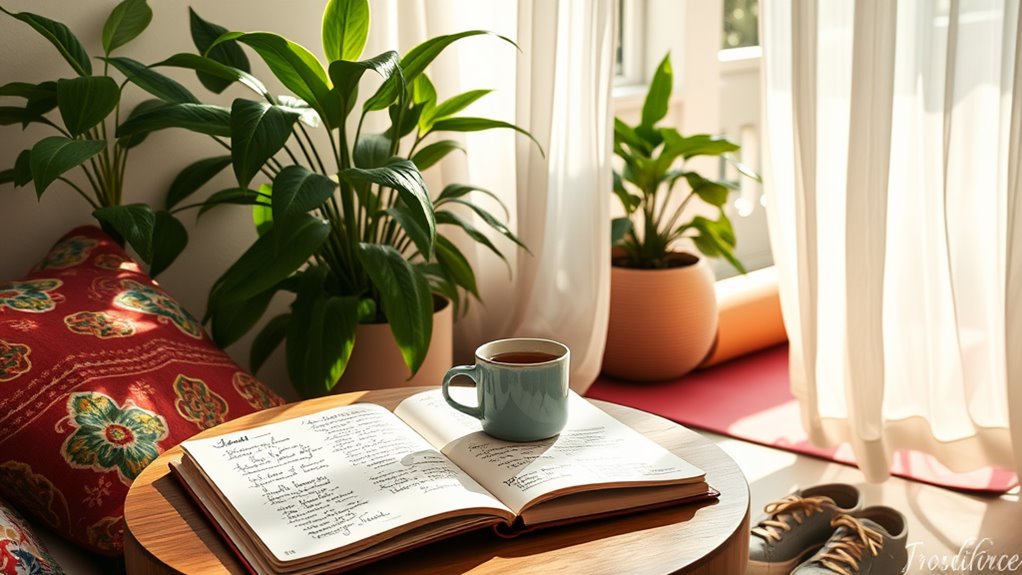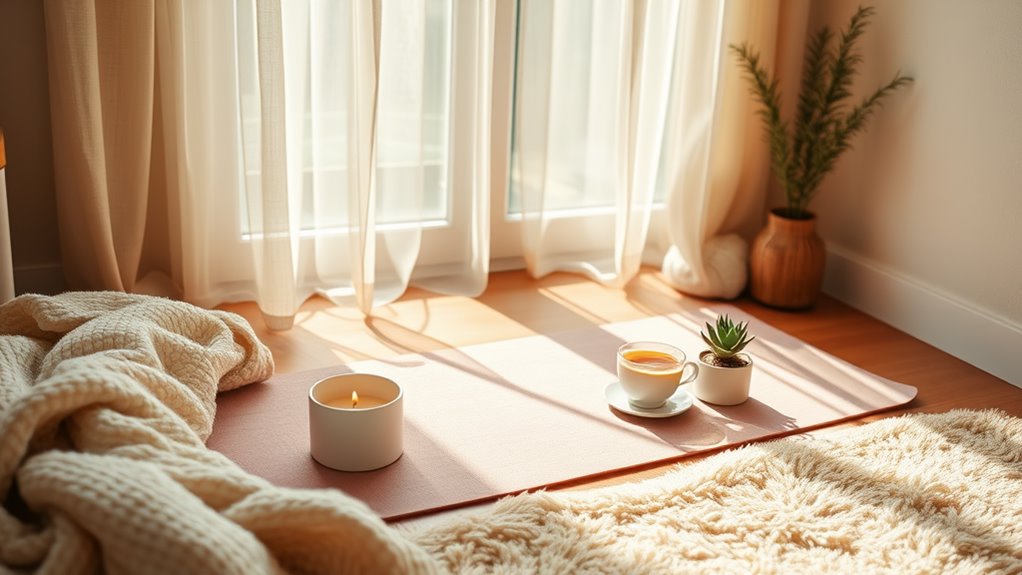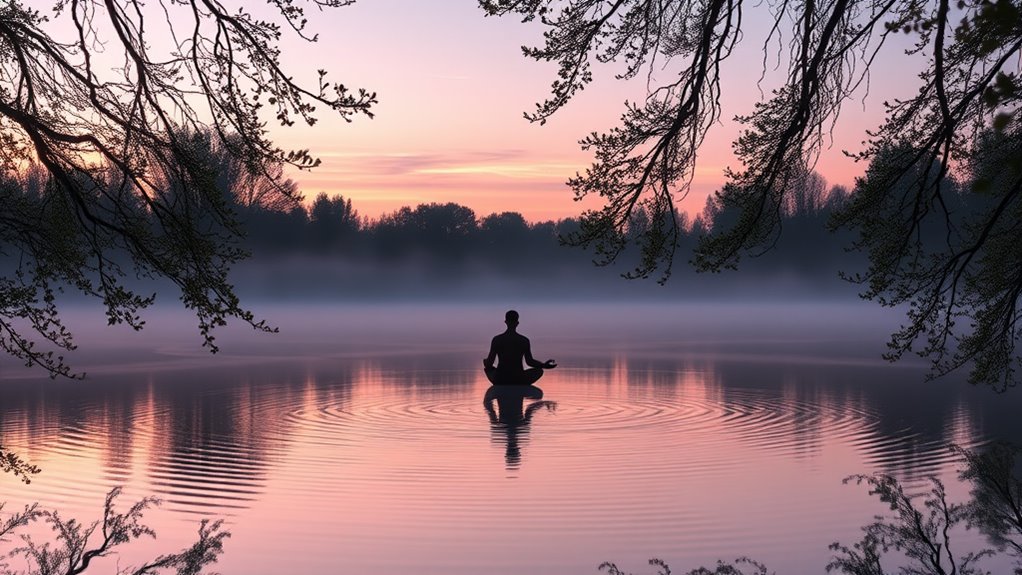How to Relax Your Body and Mind in Just 5 Minutes
In just five minutes, you can relax your body and mind with a few simple techniques. Start with deep breathing—inhale deeply through your nose and exhale slowly through your mouth. Try progressive muscle relaxation, tensing and releasing muscle groups from your feet to your face. Incorporate gentle stretching to release tension, and practice mindfulness by focusing solely on your breath. To enhance calmness, visualize a serene environment. There’s plenty more you can explore to deepen your relaxation practice!
Key Takeaways
- Practice deep breathing by inhaling deeply through your nose and exhaling slowly through your mouth to release tension.
- Engage in progressive muscle relaxation by tensing and relaxing different muscle groups, starting from your feet to your face.
- Spend five minutes in mindfulness or meditation, focusing on your breath to calm your mind and center your thoughts.
- Perform gentle stretching techniques, like neck rolls and shoulder shrugs, to alleviate physical tension and enhance relaxation.
- Use visualization to create a mental sanctuary, picturing a serene environment that engages all your senses for profound calmness.
Deep Breathing Exercises
Deep breathing exercises are one of the simplest yet most effective ways to relax your body and mind. When you focus on your breath, you create a powerful connection between your physical and mental states.
Start by finding a comfortable position, inhaling deeply through your nose, allowing your abdomen to expand. Hold for a moment, then exhale slowly through your mouth.
Repeat this process, letting each breath bring you closer to a state of body and mind relaxation. As you practice, pay attention to how the tension melts away, leaving you feeling centered and calm. Incorporating mindfulness techniques can further enhance the benefits of deep breathing.
Mastering deep breathing not only enhances your relaxation but also empowers you to tackle stressors with clarity and focus. Embrace this technique for lasting tranquility.
Progressive Muscle Relaxation
As you learn to relax your body and mind, Progressive Muscle Relaxation (PMR) offers a practical approach that helps release tension throughout your muscles.
Begin by finding a quiet space where you can sit or lie comfortably. Close your eyes and take a deep breath.
Start with your feet, tensing the muscles tightly for five seconds, then release completely. Move up your body—calves, thighs, abdomen, arms, and face—tensing and relaxing each area.
Focus on the sensations of tension melting away. PMR not only alleviates physical stress but also enhances your awareness of bodily sensations. Incorporating breathing techniques can further deepen your relaxation experience.
With practice, you’ll master this technique, enabling quick stress relief whenever you need it. Embrace the journey toward relaxation—your body and mind will thank you.
Mindfulness and Meditation
After mastering Progressive Muscle Relaxation, you might find that incorporating mindfulness and meditation can further enhance your relaxation experience. Mindfulness allows you to focus entirely on the present moment, while meditation helps quiet your mind. By practicing these techniques, you can reduce stress and improve your mental clarity. Incorporating just five minutes of focused breathing each day can transform your overall well-being.
Here’s a quick comparison to illustrate their benefits:
| Technique | Benefits | Duration |
|---|---|---|
| Mindfulness | Enhances focus | 5 minutes |
| Meditation | Calms the mind | 5 minutes |
| Combined Practice | Boosts overall well-being | 10 minutes total |
Try dedicating just five minutes a day to these practices. You’ll notice a significant improvement in your ability to relax and stay centered.
Gentle Stretching Techniques
While you’re settling into your relaxation routine, gentle stretching techniques can be a fantastic addition to help release tension in your body.
Start with a simple neck roll to ease stiffness, letting your head move in a slow, circular motion. Then, shift to shoulder shrugs, lifting your shoulders towards your ears, and releasing them down.
Next, try a seated forward bend; while sitting, reach for your toes, feeling the stretch in your lower back. Incorporate side stretches by extending one arm overhead and leaning to the opposite side.
Finally, finish with wrist and ankle rotations to release any lingering tightness. These techniques not only enhance relaxation but also prepare your body for deeper states of calm and focus, promoting overall well-being amid a busy lifestyle.
These techniques not only enhance relaxation but also prepare your body for deeper states of calm and focus.
Visualization for Calmness
How can you tap into the power of your imagination to find calmness?
Begin by closing your eyes and taking a deep breath. Picture a serene environment, whether it’s a tranquil beach or a peaceful forest. Engage all your senses; feel the warmth of the sun, hear the gentle waves, or smell the fresh pine.
Allow these vivid images to envelop you, creating a sanctuary in your mind. As you visualize, notice how tension melts away. Focus on each detail, immersing yourself fully in this mental retreat. Practicing breathing techniques can further enhance this experience, helping to deepen your relaxation.
If distractions arise, gently steer your thoughts back to your chosen scene. In just five minutes, you can harness visualization to cultivate a profound sense of calm and clarity, empowering your mastery over stress.
Frequently Asked Questions
Can I Relax While Sitting in a Chair?
Absolutely, you can relax while sitting in a chair. Focus on your breath, release tension in your muscles, and engage your mind with calming thoughts. It’s all about creating a tranquil environment for yourself.
How Often Should I Practice These Techniques?
You should practice these techniques daily for the best results. Consistency builds mastery, so integrate them into your routine. Even short sessions can enhance your relaxation skills, helping you develop a deeper sense of calm over time.
Is There a Specific Time of Day for Relaxation?
Finding the right time’s key. You might feel more relaxed in the morning, after lunch, or before bed. Experiment and see when your mind and body respond best to your relaxation techniques.
Can Children Benefit From These Relaxation Methods?
Absolutely, kids can benefit greatly from relaxation methods. By incorporating simple techniques, you help them manage stress and improve focus. It’s essential for their development, ensuring they cultivate emotional resilience and mental clarity as they grow.
What Should I Do if My Mind Keeps Wandering?
Isn’t it frustrating when your mind wanders? You can gently acknowledge those thoughts, then refocus on your breath or a calming image. Practice this consistently, and you’ll strengthen your ability to stay present and centered.
